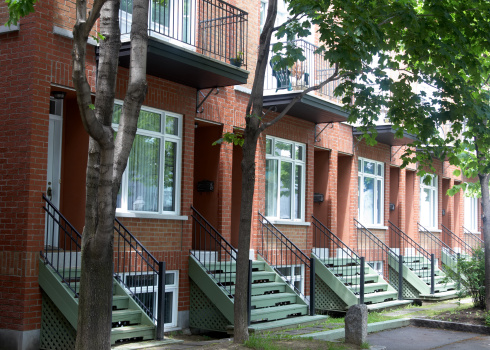Housing
San Francisco, Denver, Dallas Post Largest Gains on Case-Shiller Index
Published:
Last Updated:

The S&P/Case-Shiller home price index for March increased by 5% year-over-year for the 20-city composite index and by 4.7% for the 10-city composite index. The national index rose 4.1% year-over-year, compared to a 4.2% gain in February. The consensus estimate for the year-over-year 20-city index called for growth of 4.6%.
Month over month, the 10-city index rose 0.8% and the 20-city index gained 0.9%, while the national index rose by 0.8%.
The index tracks prices on a three-month rolling average. March represents the three-month average of January, February and March prices.
Average home prices for March remain comparable to their levels in the autumn of 2004.
ALSO READ: The 10 Richest Towns in America
Compared with their peak in the summer of 2006, home prices on both indexes remain down about 15% to 16%. Since the low of March 2012, home prices are up 29.8% and 30.7% on the 10-city and 20-city indexes, respectively.
All 20 cities in the index posted year-over-year gains. Only New York City posted a month-over-month decline in house prices, and they were down just 0.1%.
Year-over-year house price increases in March were smallest in Washington, D.C. (1.0%), Cleveland (1.0%) and New York (2.7%).
The chairman of the S&P index committee said:
Home prices have enjoyed year-over-year gains for 35 consecutive months. The pattern of consistent gains is national and seen across all 20 cities covered by the S&P/Case-Shiller Home Price Indices. The longest run of gains is in Detroit at 45 months, the shortest is New York with 27 months. However, the pace has moderated in the last year …. [P]eople are asking if we’re in a new home price bubble. The only way you can be sure of a bubble is looking back after it’s over. … [S]ome future moderation in home prices gains is likely. Moreover, consumer debt levels seem to be manageable. I would describe this as a rebound in home prices, not bubble and not a reason to be fearful.
The Federal Housing Finance Agency (FHFA) also released its first-quarter house price index Tuesday, reporting a gain 1.3%, nearly double the consensus estimate of 0.7%. The FHFA index is calculated using home sales price information from mortgages sold to, or guaranteed by, Fannie Mae and Freddie Mac.
The five states posting the largest year-over-year first quarter gains were Colorado (11.2%), Nevada (10.1%), Florida (8.7%), Washington (7.6%) and California (7.5%).
ALSO READ: States Where Incomes Are Booming (or Not)
If you’re one of the over 4 Million Americans set to retire this year, you may want to pay attention.
Finding a financial advisor who puts your interest first can be the difference between a rich retirement and barely getting by, and today it’s easier than ever. SmartAsset’s free tool matches you with up to three fiduciary financial advisors that serve your area in minutes. Each advisor has been carefully vetted, and must act in your best interests. Start your search now.
Don’t waste another minute; get started right here and help your retirement dreams become a retirement reality.
Thank you for reading! Have some feedback for us?
Contact the 24/7 Wall St. editorial team.